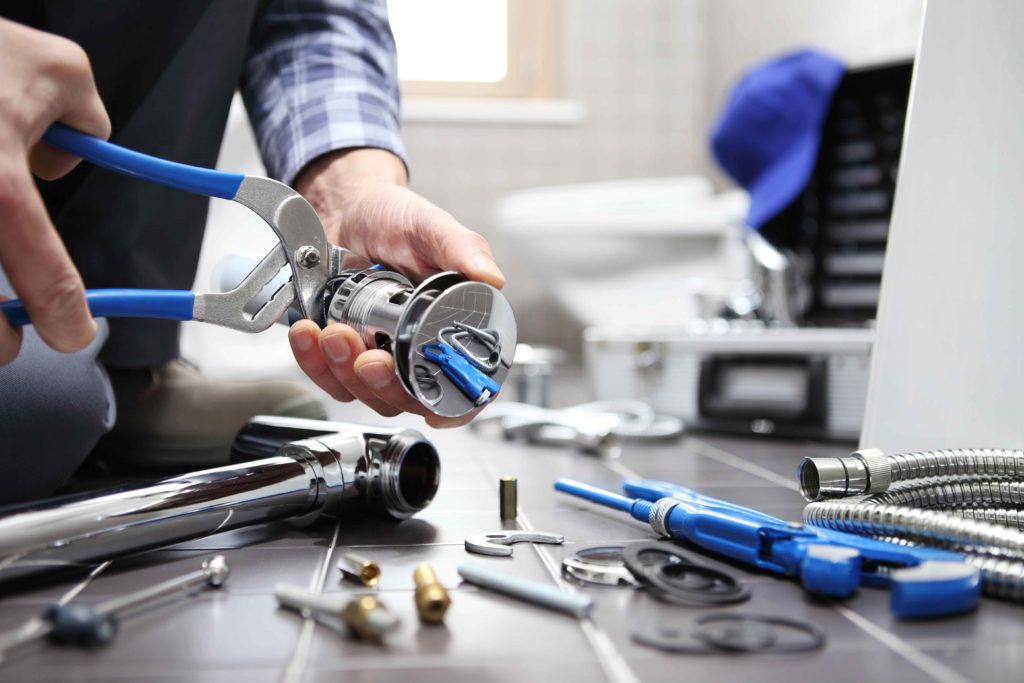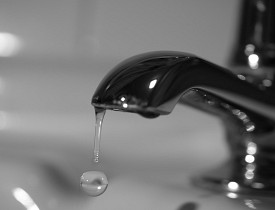Which It's Critical to Rectify a Dripping Faucet
Which It's Critical to Rectify a Dripping Faucet
Blog Article
We've discovered this article involving Should I Repair or Replace a Leaky Faucet? below on the internet and reckoned it made good sense to quickly share it with you on my blog.

Leaking taps may look like a small hassle, however their effect surpasses just the nuisance of the audio. From drainage to incurring unneeded economic costs and health dangers, neglecting a trickling tap can lead to various repercussions. In this write-up, we'll look into why it's crucial to address this common house concern without delay and effectively.
Wastage of Water
Environmental Impact
Dripping taps add dramatically to water wastefulness. According to the Epa (EPA), a solitary faucet dripping at one drip per second can squander greater than 3,000 gallons of water annually. This not only strains water resources but additionally influences ecological communities and wildlife based on them.
Financial Costs
Increased Water Bills
Past the ecological effect, dripping faucets can inflate water costs substantially. The built up wastage with time converts into higher energy expenditures, which might have been avoided with prompt repair services.
Prospective Residential Property Damages
Moreover, prolonged trickling can cause damage to components and surface areas surrounding the tap. Water build-up can cause discoloration, rust, and even architectural issues if left neglected, leading to additional fixing expenses.
Health Problems
Mold and Mold Growth
The continuous visibility of wetness from a dripping tap produces an ideal setting for mold and mold development. These fungis not only compromise interior air quality but additionally position wellness dangers, particularly for individuals with respiratory system problems or allergies.
Waterborne Conditions
Stagnant water in leaking taps can end up being a breeding ground for microorganisms and other microorganisms, increasing the danger of waterborne conditions. Contaminants such as Legionella germs thrive in stagnant water, possibly leading to serious health problems when consumed or inhaled.
DIY vs. Specialist Repair
Advantages and disadvantages of Do It Yourself Repair
While some might try to repair a trickling tap themselves, do it yourself fixings come with their own collection of obstacles. Without proper understanding and devices, do it yourself efforts can exacerbate the issue or result in insufficient repair work, extending the problem.
Benefits of Employing a Specialist Plumber
Working with a professional plumber guarantees that the underlying reason for the leaking tap is attended to properly. Plumbers have the proficiency and equipment to identify and repair faucet issues effectively, saving time and reducing the danger of more damages.
Step-by-Step Guide to Taking Care Of a Dripping Tap
Devices Called for
Prior to trying to deal with a trickling tap, collect the essential devices, consisting of a flexible wrench, screwdrivers, substitute components (such as washers or cartridges), and plumber's tape.
Typical Faucet Issues and Their Solutions
Identify the type of tap and the details concern creating the drip. Usual issues include worn-out washers, rusty shutoff seats, or malfunctioning O-rings. Refer to producer instructions or online tutorials for step-by-step advice on fixings.
Safety nets
Routine Maintenance Tips
To prevent trickling taps, carry out routine maintenance such as cleaning up aerators, evaluating for leakages, and changing worn-out components quickly. Furthermore, consider mounting water-saving tools or upgrading to more efficient components.
Value of Prompt Repair Works
Addressing trickling faucets as quickly as they're observed avoids more water waste and potential damages, eventually conserving both water and cash in the long run.
Influence On Property Worth
Perception of Well-Maintained Home
Maintaining a property in good condition, consisting of addressing upkeep issues like leaking taps, improves its regarded value and worth among possible buyers or renters.
Impact on Resale Value
Features with well-kept plumbing components, including taps, command greater resale values in the realty market. Addressing leaking taps can contribute to a positive impression throughout residential or commercial property assessments and negotiations.
Environmental Duty
Individual Contribution to Preservation
Taking duty for repairing leaking taps aligns with wider efforts toward water preservation and ecological sustainability. Every individual's actions jointly make a substantial impact on protecting valuable sources.
Lasting Living Practices
By prioritizing prompt repair services and taking on water-saving behaviors, individuals add to lasting living techniques that profit both present and future generations.
Conclusion
Dealing with a leaking tap surpasses plain convenience; it's an important action towards conserving water, reducing monetary expenses, and guarding health and wellness and property. Whether via DIY repair work or specialist assistance, taking action to take care of trickling taps is a tiny yet impactful means to advertise liable stewardship of sources and add to a healthier, much more lasting future.
How to Fix a Leaky Faucet: Step-by-Step Repair Guide
A leaky faucet may seem like a simple annoyance, but if it's not fixed promptly, that leak could cost hundreds to potentially thousands. From water damage to mold, mildew, and high water bills, even a tiny leak can be catastrophic if left unattended. Damage like this can even affect the overall value of your home, so it's important to take the right approach for leaky faucet repair. You may need the help of a plumber in some cases, but we've got a few tips you can try on how to fix a leaky faucet before calling the pros.
Four Faucet Types
When you're learning how to fix a leaky faucet, the first step is knowing what kind of faucet you're working with! There are four common types.
Cartridge Faucets
Cartridge faucets come in one- or two-handled varieties. In one-handled cartridge faucets, hot and cold water combines in a single cartridge. In the two-handled versions, hot and cold water are controlled separately and mixed in the faucet.
Ball Faucets
Ball faucets have a single lever you push up and down to adjust the pressure and rotate to change the temperature. A slotted metal ball controls the amount of water allowed into the spout.
Compression Washer Faucets
They're the oldest type of faucet, but they're still used in many homes — especially older ones. Compression faucets have two separate handles that, when turned, raise or lower the washer that seals a water valve. This valve stops water from flowing through the faucet when it is turned off.
Disc Faucets
Disc faucets rarely need to be repaired due to their maintenance-free design. The water flow is controlled by two discs — the upper one raises and lowers against a fixed lower disc, creating a watertight seal. If your disc faucet starts leaking, you may need to replace the seals or clean residue buildup from the inlets.
Fixing a Leaky Faucet
Step 1: Turn Off the Water
Whether you're learning how to fix a leaky bathtub faucet or how to fix a leaky kitchen faucet, always turn off the water supply to your working area when you're fixing a leak. The last thing you want is a flood added to your list of things to fix.
Look for the shutoff valves below your sink or around the tub and turn them clockwise to stop the water flow. If your faucet doesn't have shutoff valves, you may need to turn off the water for the whole house. Check to make sure it's off by turning the faucet on. If nothing comes out, you're ready to start the repair.
Step 2: Take Apart the Faucet
How you disassemble your faucet depends on the type of fixture you have. You can use a flathead screwdriver to remove the caps on top of the handle or handles for cartridge and compression faucets. Inside, you should see handle screws. Unscrew these with a screwdriver to remove the handle.
Disc- and ball-style faucets will typically have an inlet screw near the handle, and removing that will reveal the interior of the faucet.
Detach the Valve Stem
For cartridge- and compression-style faucets, you'll see the inner valve stem or cartridge once you remove the faucet handles. If you have a compression faucet, unscrew the brass valve stem. If you have a cartridge faucet, pull out the cartridge. If your cartridge has been in place for a while, it may require some tools or extra force to remove it due to mineral deposits.
Examine and Replace Parts
Once you've removed the parts, check them out to confirm what needs to be replaced. You may see corroded rubber washers, O-rings, stems, or cartridges. On a ball-style faucet, check the seats and springs for damage.
If you need to repair a leaky disc faucet, check the inlet and seals on the lower disc.
Once you determine what parts must be replaced, visit your local hardware store. Bring the damaged parts with you to ensure you can purchase the correct components to replace them.
Clean Valves and Faucet Cavity
If you've removed a stem or cartridge, you may notice mineral buildup in the faucet's threads. Use white vinegar to clean the valve seat by soaking it for a few minutes, then scrub it away with a soft toothbrush and rinse with warm water. You can also clean the interior of the faucet in the same way.
Reassemble the Faucet
Once your faucet is cleaned and the required parts have been replaced, it's time to reassemble it. Put the pieces back together and slowly turn the water supply back on. Doing this slowly is crucial because too much initial water pressure can damage the new hardware you've just installed.
https://homewarranty.firstam.com/blog/how-to-fix-leaky-faucet

I'm just very involved in Leaky Faucets: Why They Happen & What to Do About Them and I'm hoping you enjoyed reading the entire blog entry. Enjoyed reading our review? Please quickly share it. Let someone else check it out. We cherish reading our article about How to Fix a Dripping or Leaky Faucet .
Report this page